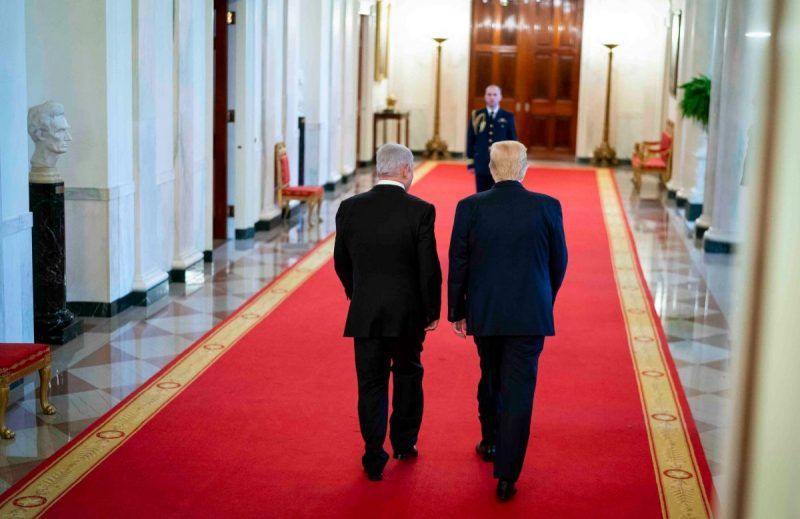
President Trump’s “Ultimate Deal” for Israeli-Palestinian peace isn’t ultimate, and it isn’t quite a deal. Released on Tuesday, the plan — or “Peace Vision,” as it’s called in its official document — has three flaws. None are fatal.
First, the dissonance between its pretension and its timing: It purports to change history, but coming just one month before Israel’s elections, it serves petty politics. Second, there is a mismatch between the plan’s stated aim and the actors who are meant to put it into place: It seeks to bring peace between Israel and the Palestinians, but the Palestinians are not full partners in its implementation. Third, and the biggest problem: The plan doesn’t meet the Palestinians’ minimum conditions. Can anyone imagine that the Palestinians, who have previously rejected plans that offered them nearly 100 percent of the West Bank, might be happy with just 70 percent? The peace plan, in other words, will not bring peace.
But these three flaws should not distract us from the big opportunity the plan presents: It cleverly redivides, even temporarily, the territories in dispute. This division can rearrange the conflict. If put in place, the plan would create a Palestinian state with almost full sovereignty on some 70 percent of the West Bank, while fully addressing Israel’s security needs. The conflict would not end, but it would be functionally different. The Israeli-Palestinian conflict is a conflict between occupiers and the occupied. But after the plan it would become a conflict between two separate political entities — and that’s an entirely new paradigm. This should be the plan’s big ambition: Instead of seeking to end the battle, it should fundamentally redraw the battle lines.
The problem with the “Ultimate Deal” is the mismatch between the plan and its stated aim. As a peace plan, it’s laughable. But sometimes, all that’s needed to fix a problem is to rethink the purpose of the solution. And here, we can stop pretending that the United States plan will end the conflict, and admit that it might be better at transforming its character. And with more modest goals, it might enjoy better success.
To turn the Trump administration’s proposal from a bad plan to end the conflict into a good plan to transform the conflict, all references to ending the conflict should be removed. The Palestinians cannot be expected to recognize Israel as a Jewish state, formally renounce the right of return or sign a document announcing an “end to claims.”
What would Israel gain from a plan to reconfigure the conflict? Plenty. Most Israelis are trapped between two national aspirations. On the one hand, they don’t want to rule over the Palestinian people, but on the other, they don’t want to live under the threat of rockets from a Palestinian state. The tension between these two impulses has paralyzed Israel’s ability to address the conflict. A plan to reconfigure the conflict would dramatically reduce Israel’s control over the Palestinians and do so without putting Israel in danger. In other words, for Israelis, the Trump plan would smash the zero-sum game between security and ending the occupation. Israelis would be able to greatly reduce their rule over the Palestinians without being any more threatened by them.
And what do the Palestinians stand to gain from a plan to reconfigure the conflict? Also plenty. The Palestinians, too, are trapped. On the one hand, they want an independent state of their own, but on the other, most of them want the Palestinian refugees to “return” — that is, to be relocated to Israel. Moreover, a large section of Palestinian society is unwilling to recognize non-Muslim sovereignty over any part of the Holy Land. Reconciling with Israel would be a religious concession, and relinquishing the “right of return” would be a national concession. For many Palestinians, those two concessions would mean renouncing their most sacred beliefs, which form a part of Palestinian identity. For many years, the various peace plans proposed to the Palestinians expected them to forgo these two axioms. But the Palestinians have always refused a deal in which they would have to relinquish core elements of their national identity as the price for independence. A plan to rearrange the conflict would give the Palestinians a state without expecting them to pay for it by renouncing their demand for a right of return and thereby conceding a plank of their national identity.
Under the plan, the new Palestinian state will not be completely sovereign, but it will be mostly sovereign, and the elements of the occupation that immiserate Palestinians in their day-to-day lives — namely restrictions on movement, construction and economic growth — will be swept away.
In other words, any plan would need to drop the pretense of realizing either side’s perfect deal. This plan begins to do that. Under it, the Palestinians could dramatically enhance their sovereignty without conceding their aspirations, and Israel should control far fewer Palestinians without conceding its security. Neither side will give up on what is truly important to it, and both will reduce what is truly painful. It won’t be peace. It won’t be a new Middle East. But it will be progress.
Conflicts between neighbors are not only healthier than conflicts between occupiers and the occupied — they are also more likely to support negotiations. Talks in the future would be between two sovereign states. In other words, reconfiguring the conflict will create new opportunities to continue shrinking it.
It’s time to stop devoting our energy and political capital to ending the conflict in a single, “Ultimate Deal,” and start focusing on a much more modest mission — transforming its nature. Instead of rejecting the plan — we should think again about what it can and should realistically achieve. That’s the way to break through the deadlock, minimize suffering and forge a new reality.
Micah Goodman is the author of Catch-67: The Left, the Right and the Legacy of the Six-Day War.
